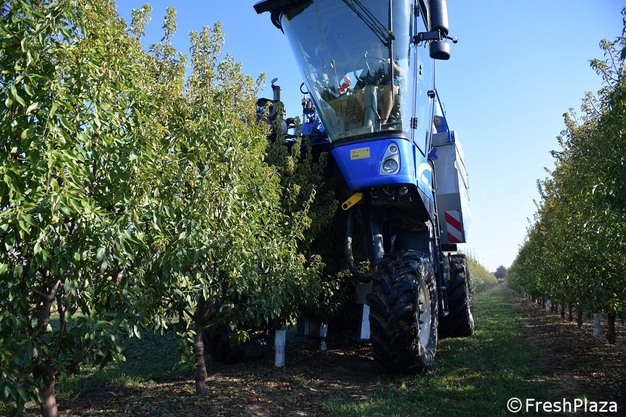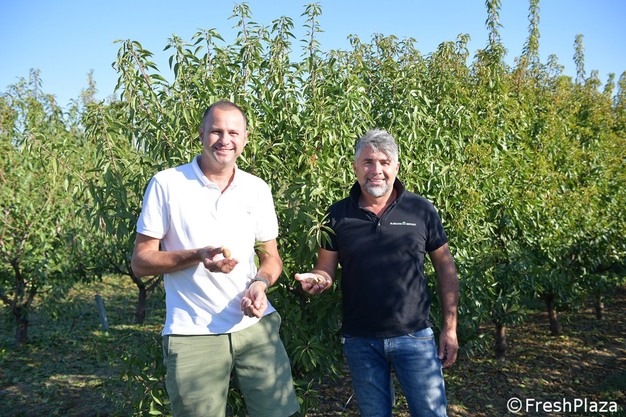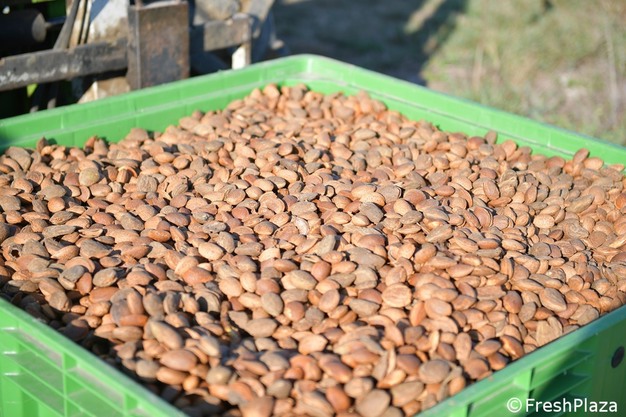Almond cultivation in Italy is gaining momentum as producers seek to modernize and increase domestic production to reduce reliance on imports. In response to this growing demand, the Italian Modern Almond Consortium (CIMM) has developed fully mechanized almond orchards designed to optimize efficiency and yield. Currently, the CIMM is actively harvesting in the regions of Emilia-Romagna, Veneto, and Piedmont. Italy remains a net importer of almonds, with over 27 thousand tons imported from Spain in 2024 alone, valued at approximately 132 million euros.
Click here for the photo gallery
 © Cristiano Riciputi | FreshPlaza.com
© Cristiano Riciputi | FreshPlaza.com
The harvest took place at Luca Pasotti's farm on 5 September 2025. Pasotti, who believed in the project from the beginning, planted the first two hectares in 2022 and another two in 2024.
"The number of Cimm members and hectares is increasing," explains Michele Zaniboni, president of Romagna Impianti and the project's contact person. "Almond cultivation in northern Italy has great potential, which is why we have created a supply chain that goes from nursery to sale."
Click here for the photo gallery
 © Cristiano Riciputi | FreshPlaza.com
© Cristiano Riciputi | FreshPlaza.com
"Our approach is based on mechanization and the use of late-flowering varieties," explains Matteo Ferrari of FruitNet System. "This helps us avoid possible frosts. This plant has two varieties: Makako and Vialfa."
The harvesting process is fully mechanized with a self-propelled machine that requires no modifications. This equipment ensures the almonds never touch the ground, guaranteeing their quality and freshness immediately after harvesting.
Click here for the photo gallery
 © Cristiano Riciputi | FreshPlaza.com
© Cristiano Riciputi | FreshPlaza.com
Ilenio Bastoni, the contact person at Terremerse, a cooperative belonging to Cimm, emphasizes, "Thanks to the producers' organization OP Terremerse, the consortium financed the creation of new, modern almond groves last year. The number of members is growing and now totals around twenty, as does the amount of cultivated land."
Click here for the photo gallery
 © Cristiano Riciputi | FreshPlaza.com
© Cristiano Riciputi | FreshPlaza.com
As soon as the almonds are harvested, they are taken to the small mill where the husks are removed. Then, they are placed in bins and shipped to the dryer. "The supply chain is perfectly organized, fast, and efficient," says President Zaniboni. "We are certain that almond cultivation can be a viable alternative to fruit growing."
For more information:
Almond project
